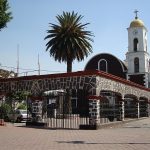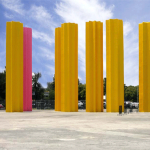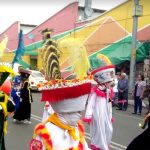
Metro Mixiuhca has done more to standardize the spelling of its often misspelled host city than probably any other act in history.
Mixiuhca was a legendary early settlement of the Mexica people. Forced out of a settlement called Tizapán, they fled through some of the less desirable and swampy parts of the ancient Valley of Mexico. Out of necessity, women and children floated on oversized shields that they used as rafts. At a place called Temazcaltitlan, one of the women who fled gave birth quite notoriously. Since then, even today, the place is called Mixiuhca, which means “place of childbirth”.
called Mixiuhca, which means “place of childbirth”.
Today, the city itself is less well known than the sports complex that bears the same name. People are more likely to come to the sports facilities from Metros Velódromo, Ciudad Deportiva or Puebla. (It is a large complex). But for the town of Magdalena Mixiuhca, the church, and for the Jardín Balbuena neighborhood, this is the preferred metro station. It is one of the two original towns in the municipality of Venustiano Carranza.
There is also a well-regarded tropical fish market (Mercado de Peces Mixiuhca) and the Fray Nano Baseball Stadium, in addition to some of the westernmost ball fields.
The station symbol and illustration above are based on glyphs or glyph-like illustrations from the early colonial period.

Nearest at 0.35 kms.

Nearest at 0.65 kms.

Nearest at 0.71 kms.

One of Mexico City's biggest indoor sports arenas . . .

80 years of Diablos Rojos history in one fascinating museum.

Goeritz' tribute to the Big Dipper...

One of Iztacalco's classic neighborhood markets...

The biggest of Iztacalco's public markets...